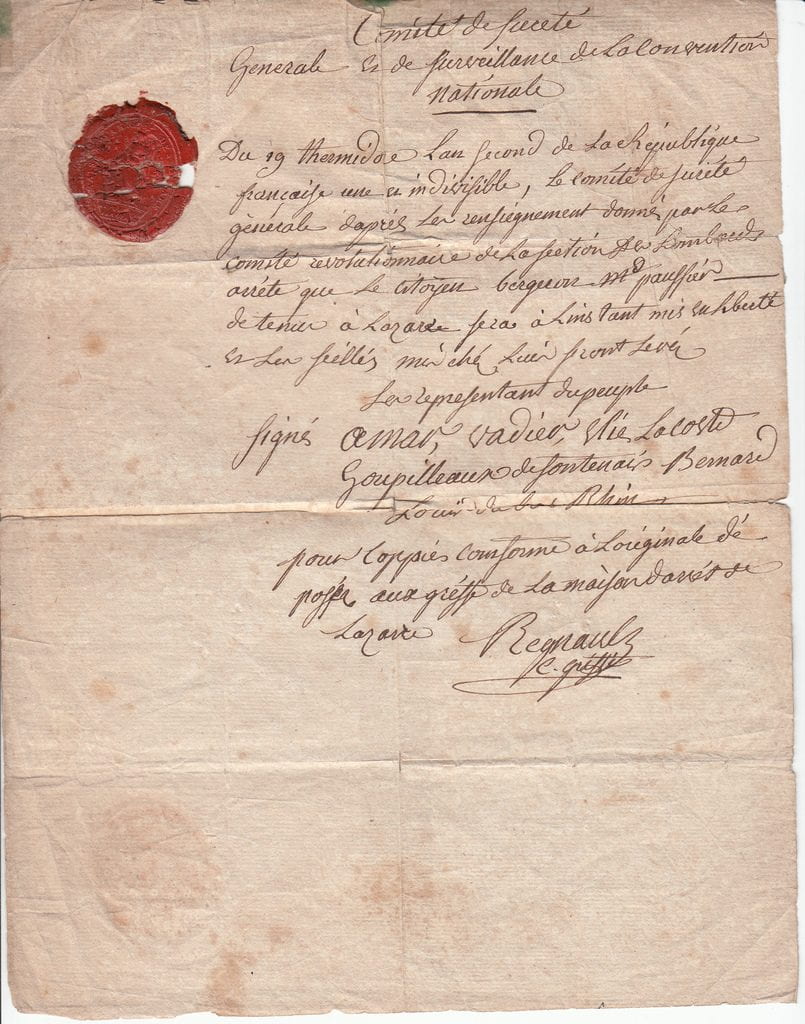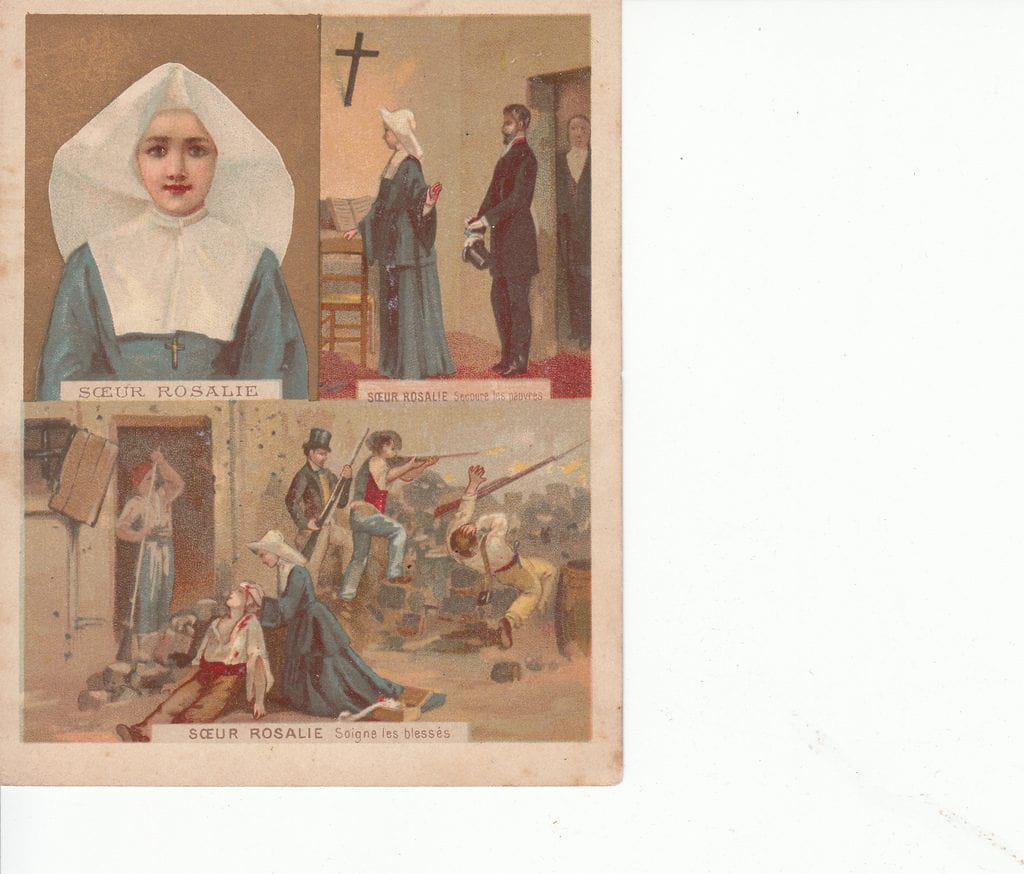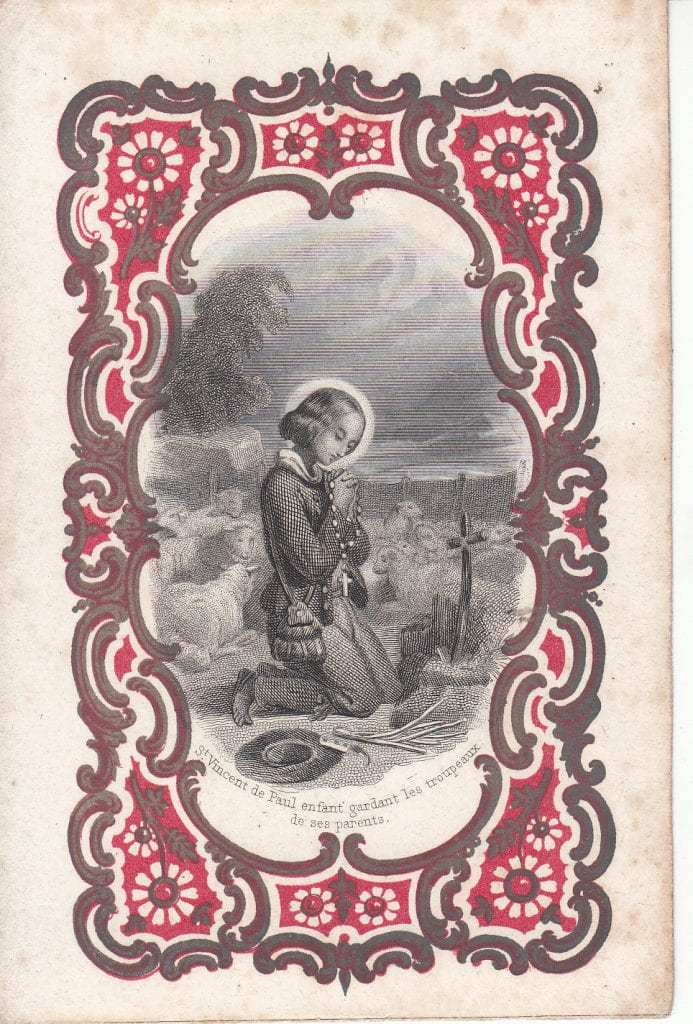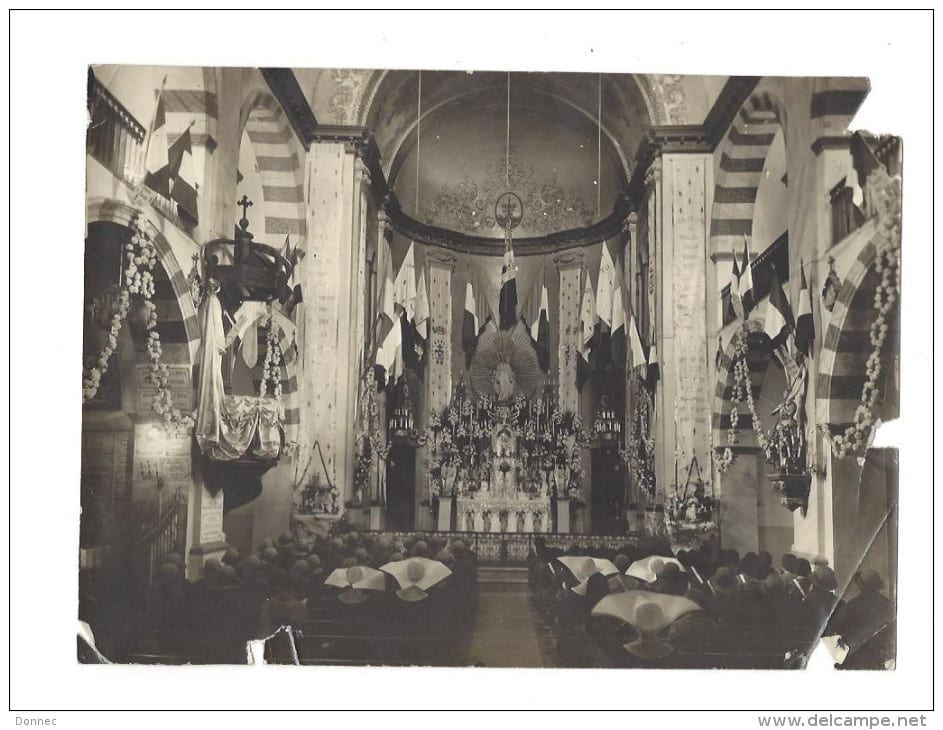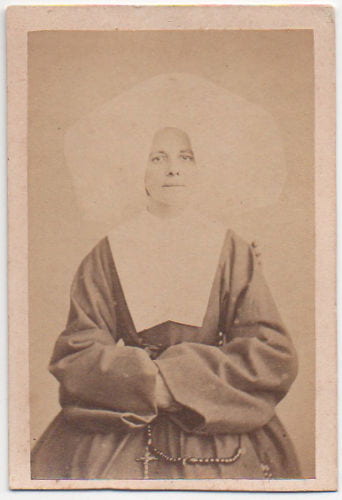The Vincentiana Collection in Special Collections and Archives of DePaul University has recently purchased a rare 1794 document from Saint-Lazare’s early days as a revolutionary prison. This document orders the relase of “citoyen Bergeron” who had been imprisoned at Saint Lazare by the “Comite de Surete Generale.” It is dated 19 termidor an II (6 August 1794). Robespierre had been executed nine days earlier in the Thermidorian reaction. This sealed docment is a copy: “l’original etant depose au greffe de la prison.”
archives
Vincentiana Purchase of the Week: Rare Rosalie Rendu Holy Card
This rare late 19th century postcard of Rosalie Rendu does not use the familiar mature portrait image of Rosalie but pictures Rosalie as a younger sister. There is also a scene from the barricades of the Revolution of 1848, and a scene with two members of what is presumably the Saint Vincent de Paul Society. One of these gentlemen can be presumed to be Frederic Ozanam.
Newsnote: “Vincentiana Purchase of the Week.” A saint from the cradle
The Vincentiana Collection at Archives and Special Collections of DePaul University’s John T. Richardson Library recently purchased this unique mid-to-late nineteenth century holy card. The card depicts Vincent de Paul as a very young boy. According to legend, as a young boy, Vincent de Paul gave a beggar all of the money he had saved. This card names the amount: “30 sous” and associates it with a previously unknown part of the legend: the young Vincent tending his father’s flocks and praying before a rustic cross he has hand-fashioned. This prayer inspires him to this act of charity. The height of 19th century French Romanticism.
Newsnote: Vincentiana Purchase of the week: Bronze Bust of Saint Vincent de Paul
The Vincentiana Collection at the Archives and Special Collections Department of DePaul University’s John T. Richardson Library recently purchased this late 19th century bronze bust of Saint Vincent de Paul. The bronze casting is of the highest quality, and the bust is mounted on a red marble base. The artist or foundry are unknown. The bust is 10.6 inches in height, 4.7 inches in width and 3.7 inches in depth.
Newsnote: Vincentiana Purchase of the Week 8/17/2015 St. Vincent’s original parish church: Pouy
This small rare sepia photograph was recently acquired by the Vincentiana Collection at DePaul University’s Archives and Special Collections. The photograph shows the original parish church at Pouy (near Dax) where St. Vincent was baptized and where he presumably also made his first communion. The town was renamed Saint Vincent de Paul in the 19th century to honor its most famous son. The photograph dates sometime before 1913 when the church had to be torn down because of severe storm damage. Other picture postcards survive but all show the church from the angle of the flood plain below.
Newsnote: Vincentiana Purchase of the Week: 1929 centennial celebration, Damascus, Syria
The ongoing tragedy of the collapse of Syria reminds us of the long presence of the Lazaristes and Daughters of Charity in this country. The Vincentiana collection at DePaul University’s Archives and Special Collections has recently purchased this photo of the May 1929 celebration in Damascus of the 100th anniversary of the arrival of the French Lazaristes.
Newsnote: Vincentiana Purchase of the Week: Edward Young, C.M. missionary in Kanchow (1932)
Recently purchased by the Vincentiana collection at DePaul University’s archives and special collections, this 1932 press photo features the Rev. Edward Young, C.M., a missionary from the Eastern Province of the Vincentians headquartered in Germantown, Pennsylvania. The province’s Chines mission was headquartered in Kanchow. The text fails to note that Young had in 1929 been captured and held for ransom by the communist forces. For more information on Young see American Vincentians (Cape Girardeau: Vincentian Studies Institute, 1987), p. 377.
Book of the Week: “Dictionnaire Richelieu”
From the publisher: «Premier ministre de Louis XIII » et « fondateur de l’Académie française » : tels sont les titres associés à la figure d’Armand Jean du Plessis (1585-1642), cardinal-duc de Richelieu, sur les plaques de rue qui affichent son nom au coeur de Paris. Ce ne sont que les plus connus d’un grand nombre de titres acquis ou attribués à ce célèbre homme d’État et d’Église dont la vie, l’histoire et la légende se composent de mille et une facettes. Ce Dictionnaire invite le lecteur à les découvrir ou à les redécouvrir autrement à travers cent vingt notices rédigées par cinquante-sept spécialistes du Cardinal et de son époque. Replacé dans son contexte français, européen et, parfois même, mondial, chaque sujet abordé renvoie à plusieurs autres dont la lecture – complémentaire ou indépendante de celle d’une biographie de Richelieu – permettra à tout un chacun d’aborder, selon ses besoins et envies, la réflexion et l’action de celui qui avait largement contribué à l’avènement du Grand Siècle. Publisher: Honore Champion, Paris Pages: 400 ISBN: 9782745328663 70,00 Euros
Newsnote: Vincentiana Purchases of the week: 6/29/2015 “19th century Daughter of Charity cartes-de-visites”
During the mid-to-late 19th century as photography became the rage of the day, and as photographs became cheap and affordable the tradition of taking portrait photos (cartes-de-visites) became widespread. The above examples were recently purchased by the Vincentiana collections at DePaul University’s Archives and Special Collections Department. It is difficult to image that the practice of having one’s photograph taken was ever officially condoned by the poverty and simplicity conscious Daughters of Charity. It is likely, however, that family members and admirers of individual sisters prevailed upon them to have their photos taken, and then paid for them. In any event, the practice was widespread. Unfortunately, very few of the sisters in these photographs are identified by name. Yet, often the photographer would have his advertisement on the back of the photo enabling us to identify the location where the photographer worked.
Newsnote: “More of World War I and the community in France: The Berceau.”
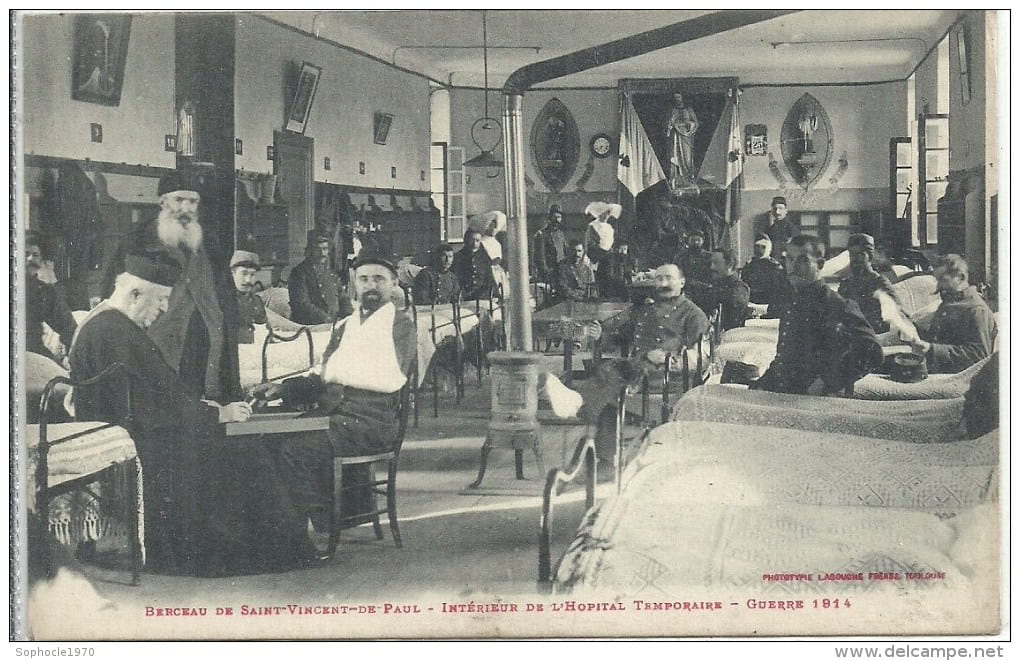 This postcard image from 1914 depicts one of the student dormitories at the Berceau of Saint Vincent de Paul (near Dax) temporarily transformed into a military hospital (hopital auxiliaire). Daughters of Charity from the orphanage and hospice served as nurses. In the left hand lower corner a confrere (wearing a biretta) plays a board game with one of the wounded soldiers. This postcard was recently acquired by the Vincentiana collection at the Archives and Special Collections at DePaul University in Chicago.
This postcard image from 1914 depicts one of the student dormitories at the Berceau of Saint Vincent de Paul (near Dax) temporarily transformed into a military hospital (hopital auxiliaire). Daughters of Charity from the orphanage and hospice served as nurses. In the left hand lower corner a confrere (wearing a biretta) plays a board game with one of the wounded soldiers. This postcard was recently acquired by the Vincentiana collection at the Archives and Special Collections at DePaul University in Chicago.
